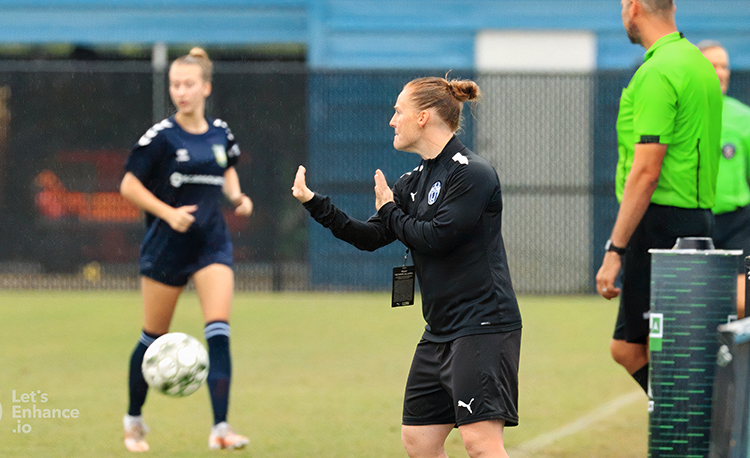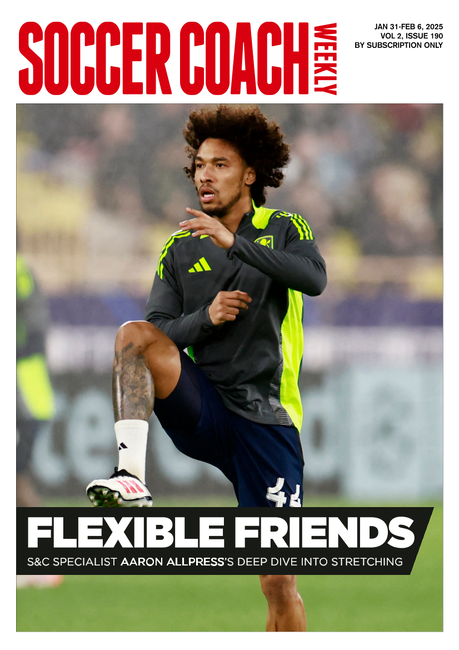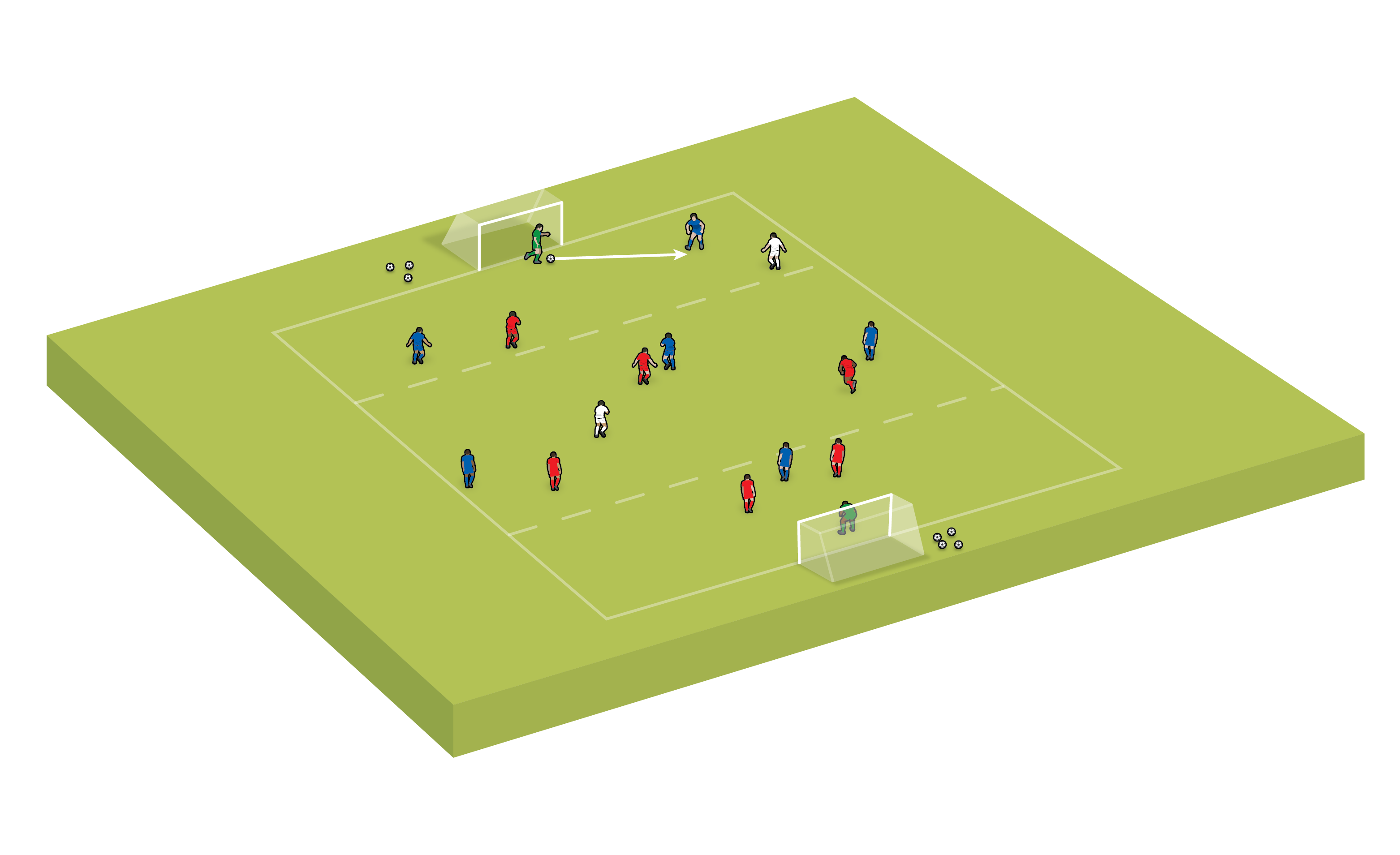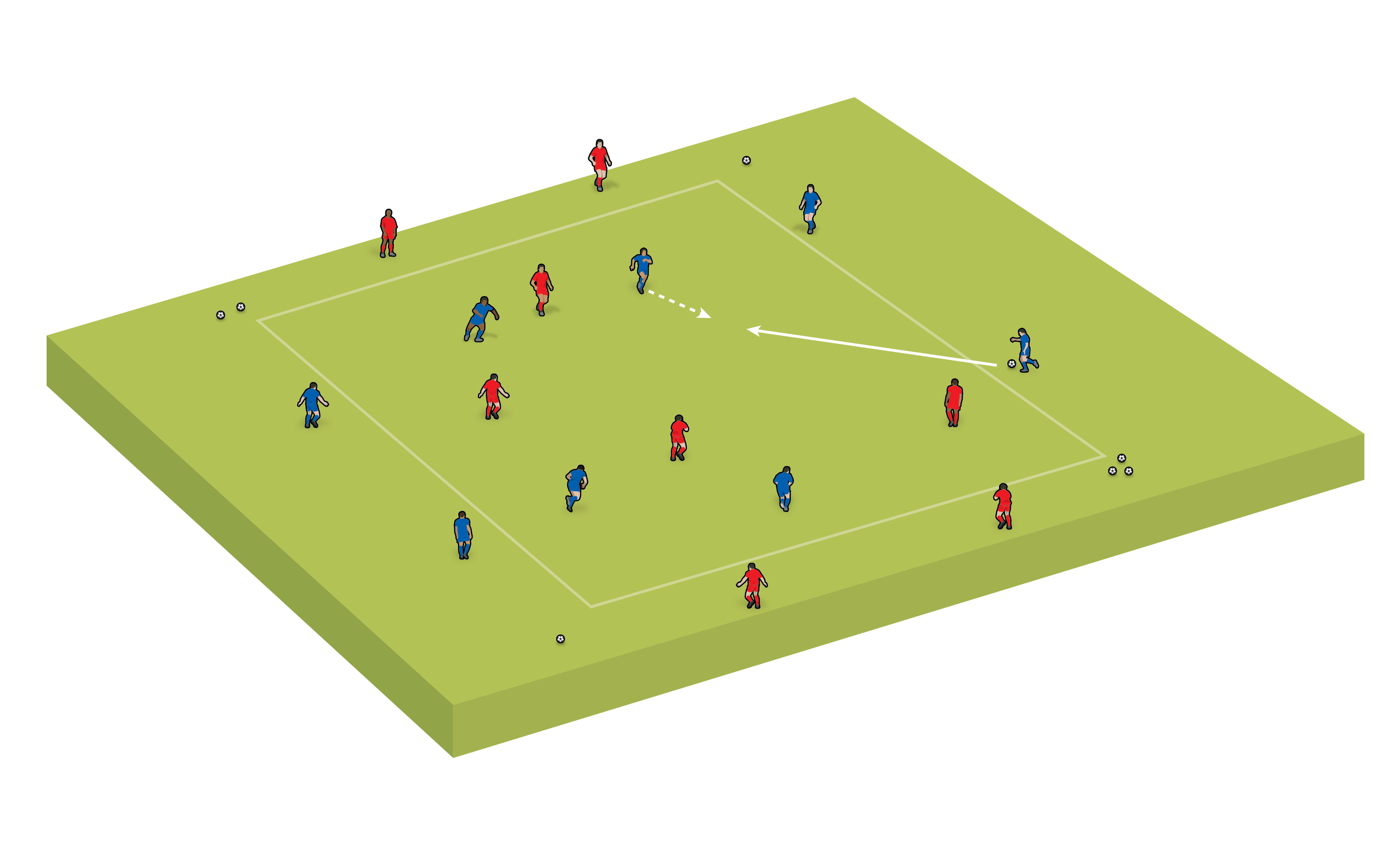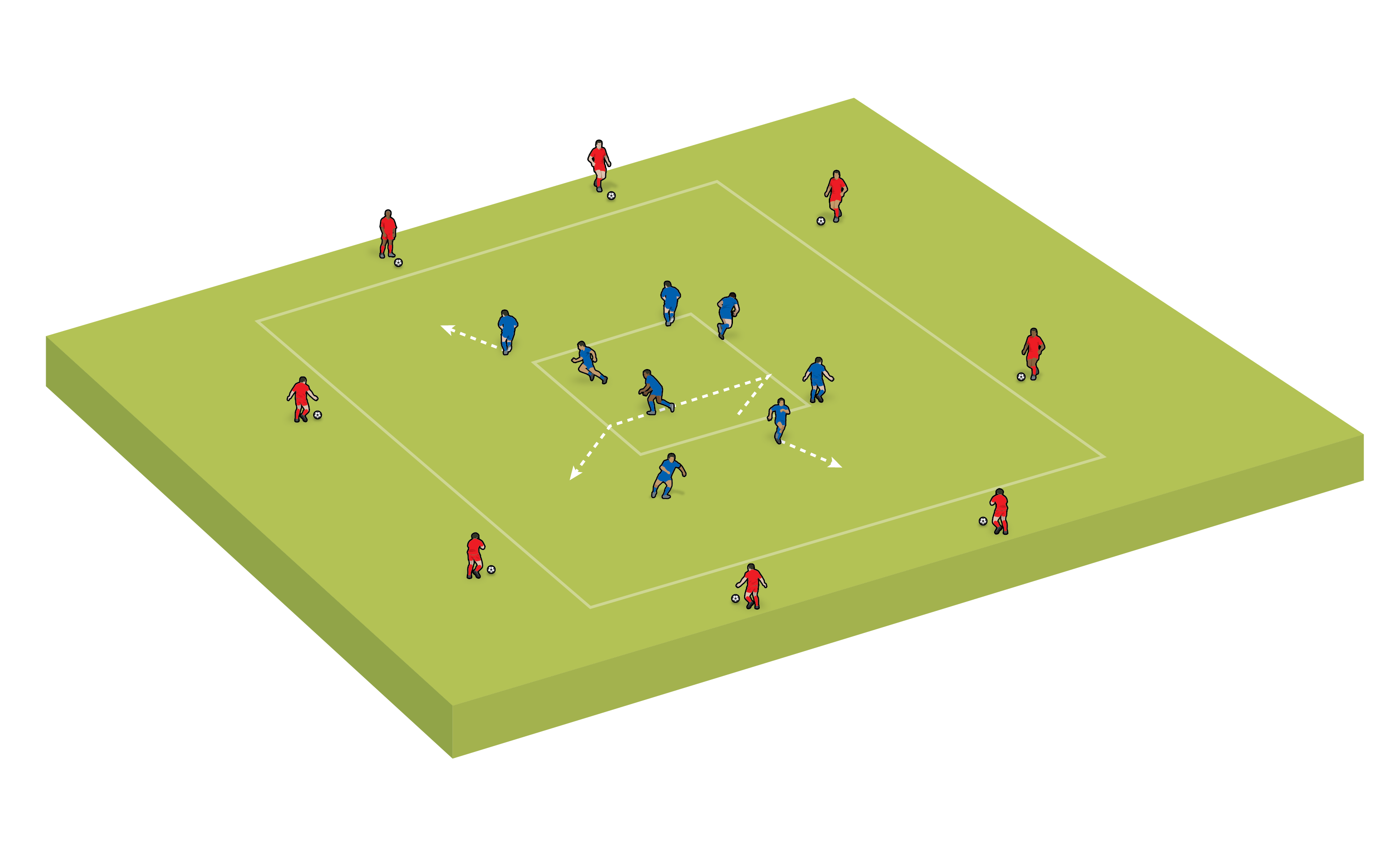Sarah Brady: Connecting talent with opportunities
USL Academy women’s pathway director Sarah Brady discusses her passion for youth development and the upcoming USL Academy Cup with Steph Fairbairn
Sarah Brady had aspirations of making it as a player.
She went through Everton’s academy before playing for her beloved Liverpool for a brief time, and then moving to Leeds United for a short spell.
When, she says, her "body didn’t really want to comply with the ambition", she took a step into coaching. It led her to the USA 14 years ago, where she has “done everything, from tying the shoelaces of three-year-olds all the way up to the collegiate game”.
Last season, she was head coach of AC Connecticut in the inaugural USL W League, a pre-professional women’s league. Now, she is the USL academy director for the women’s pathway.
SCW caught up with Sarah to find out more about the USL Academy structure, the Academy Cup, and what challenges coaches face working in the set up…
SCW: What was it that made you jump at the opportunity to take on this role with the USL? What is it that makes you so passionate about developing and supporting the female game?
SB: "I honestly think it is seeing the talent at ground level. There is so much talent, and not just in the ecosystems.
"We have got plenty of soccer in America, but there’s a lot of kids who are still not able to access the opportunity that their talent merits.
“I definitely miss the pitch - there’s nothing like putting your boots on, as a player and, next best job, as a coach. But what I love about what the USL is trying to do is connect talent with opportunity.
"I think that is very evident every day in all of our decision making. It is driving our initiatives and what we are trying to do.
“It is not just for players, it’s female coaches as well and referees. We’re just basically trying to make that opportunity via our pathway a little bit more streamlined, so when you are an academy player, you can see a career in the game, whether that’s on or off the pitch."
SCW: What is the academy program like? What are the plans to build that out further?
SB: "One of the biggest differences is it’s a U20 model. In the US right now, there is a huge pay-to-play model, and age group football is the driver of that - if we have a team at every age group, that is a lot more dollars in revenue.
"If you are good enough, you are old enough – let’s put all the talent together..."
"What tends to happen is the talent is kept within age groups because we want to win right now. It is a very season-on-season development plan in the majority of cases.
"With the USL being that U20 umbrella age group, if you are good enough, you are old enough - let’s put every talent together.
"In England, we go to high school at 11 and there’s one high school team. So as an 11-year-old, if you’re good enough, you’re playing with 16-year-olds and competing in your county.
"It is kind of inspired by that model - let’s put all the talent together, let’s take it out of the confinement of age-group football and let’s really accelerate it.
"That U20 model is more of an umbrella, and we empower our clubs to decide, based on what they think a player is ready for.
"It’s a supplemental program. It doesn’t replace age-group football. The other leagues in this country do a good job of what they do - the competition structures are very clear, and people buy into that greatly in the pursuit of the college scholarship.
"Our model is a supplement on top of that. The idea is to give the clubs the flexibility to put the development of the individual player over the needs of a team environment.
"Our model is very fluid and flexible. The roster is not locked in throughout a full cycle. The movement of players is very common.
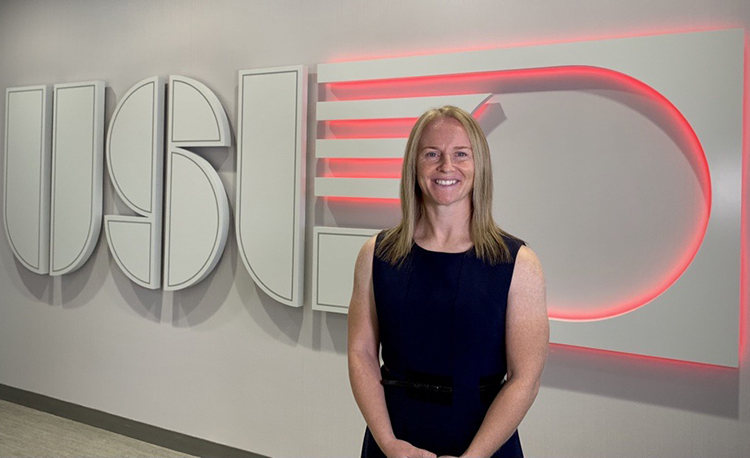
"You can actually also drop senior players down - so if you have a men’s or women’s senior team, you can play some of those overage players in the academy to make sure we are accelerating those younger players.
"That was my favorite thing about being a coach at USL academy level. I had a fantastic 17-year-old center back who was not being challenged at age-group football.
"So, we had her play with a 22-year-old - a very well-decorated college player - and it brought her on tremendously. We wouldn’t have been able to do that in any other platform currently in the US."
SCW: Can you give us an overview of the Academy Cup - why it exists and what it looks like...?
SB: "The Academy Cup is going to take place in Tampa [from March 30-April 2]. We have 128 teams flying in from all over the country to participate.
"It’s a tiered competition, so we have pro teams competing against amateur teams. [For] every level across the US in our ecosystem, it’s an open invite. You have to apply to attend, but it’s just a celebration of local talent under that ecosystem.
"You could be the best local talent in Lexington, who are one of our attendees this year on both the boys’ and girls’ side - let’s see how he or she matches up with a player from California or New York.
"One of my personal reasons for being so excited about it this year is there’s 128 teams, which is double last year, and there’s 40 girls’ teams. Last year we had eight.
"[It’s] a tremendous jump and shows the hunger and desire that this youth-to-pro pathway is not just for male players, it is for female players also.
"I’m just excited to get down there and see some absolutely tremendous football where the standards are extremely high for the matchday presentation.
"All the fields are wrapped, the corner flags are all branded, the final game is broadcast live with a full commentary team. We provide technical reports post events.
"This is the closest thing to a mini-international tournament, just on a domestic scale. We have three age groups - U13, U15, and U19 - again, explaining how we don’t want to lock players into age-group football.
"It’s really exciting and I can’t wait to see the talent on display."
SCW: What tips would you give coaches who bring teams into this environment about how they can manage their teams and get the best out of them?
SB: "What I believe will differentiate the very best coaches at this event [is that] all the players are great. But the truly elite coaches understand how to manage their roster across four games.
"There’s 128 teams, double last year, and 40 girls’ teams. Last year, we had eight..."
"We play one game a day which is not always typical in the US - sometimes it’s multiple games a day at these tournaments, because we’re trying to cram the competition into a smaller window.
"This is more based on that international model where we prioritize one game a day. You’ve got to be able to manage your roster.
"[It’s] kind of like the World Cup, right? You don’t want to run your race in the first game.
"We want to make sure we’re managing not just the players’ load, but also managing their expectations.
"The substitution rules are European substitution rules. Once you are substituted, you cannot re-enter the game. In the US, it’s typically a roll-on, roll-off rule or a variation.
"Some of our better coaches absolutely love that rule because it does put a little bit more emphasis on the coach being tactically astute, but it also helps you manage your roster, and that’s where you’re talking to players about expectations.
"Our more experienced coaches will know the importance of managing the roster, not just on the loads, but on player expectations and the whys of your decision.
"It’s not really common these days to make a decision in a vacuum and not explain it out, especially to the individual player.
"So I think that is where coaches can really get a lot of experience that’s different in this event than maybe some of the other events across the country."
Related Files
Newsletter Sign Up
Coaches Testimonials

Gerald Kearney, Downtown Las Vegas Soccer Club

Paul Butler, Florida, USA

Rick Shields, Springboro, USA

Tony Green, Pierrefonds Titans, Quebec, Canada
Subscribe Today
Discover the simple way to become a more effective, more successful soccer coach
In a recent survey 89% of subscribers said Soccer Coach Weekly makes them more confident, 91% said Soccer Coach Weekly makes them a more effective coach and 93% said Soccer Coach Weekly makes them more inspired.
*includes 3 coaching manuals
Get Weekly Inspiration
All the latest techniques and approaches
Soccer Coach Weekly offers proven and easy to use soccer drills, coaching sessions, practice plans, small-sided games, warm-ups, training tips and advice.
We've been at the cutting edge of soccer coaching since we launched in 2007, creating resources for the grassroots youth coach, following best practice from around the world and insights from the professional game.
